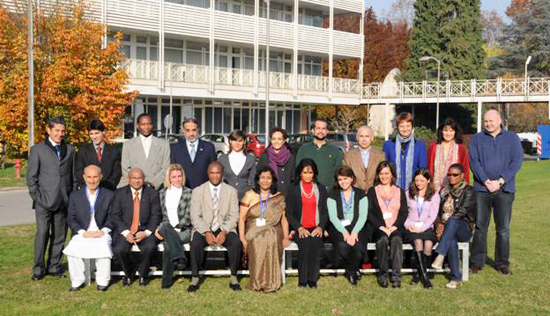

Archive
Forced Labour and Trafficking in Persons International Instruments and Practical Tools for Judges and Other Enforcement Institutions
In spite of measures the international community has adopted for prosecuting and punishing slavery-related criminal offences, millions of people around the world are still subjected to these abusive practices.
Facing the versatile face of modern slavery, judicial personnel and law enforcement confront themselves with the complex scenario of different forms of forced labour and trafficking in persons. Judiciary and law enforcement institutions have taken up the challenge of identifying and fighting new forms of slavery. There has been a growth in the legislative interventions against debt bondage, slavery-like practices and migrant smuggling. Further, there has been a steady increase in the number of cases of work and sexual exploitation brought before courts. Police and labour inspectors, often in cooperation, are playing an increasingly active role in both prevention and prosecution of these crimes. However, the slavery phenomenon remains largely invisible: few perpetrators have been prosecuted and convicted, and only a small number of victims have been identified and assisted.
In a world full of challenges, the multiple faces of slavery represent the opposite of what is envisaged by globalization, human rights and human dignity. For these reasons, targeted actions against forced labour and trafficking in persons have to become a centerpiece of human rights, anti-discrimination, poverty reduction and development programmes. To achieve this goal, all concerned actors must have the clearest possible understanding of his or her own role and responsibility and act accordingly if they are to contribute to this common effort to end exploitation. Moreover, there is a need for a more rigorous assessment of the main elements of forced labour and trafficking in persons. These sometimes elusively defined elements not only let the phenomenon exist but also contribute to its reinforcement and spreading of new forms of coercion.
With these aims in mind, UNICRI and ITCILO organized the first course on Forced Labour and Trafficking in Persons, held in the UN Campus in Turin (Italy) from the 16th to the 20th of November 2009. Born from the idea of merging the strengths of two UN entities involved in the fight against forced labour and trafficking in persons, the course was based to find insights to the following three questions:
- How can a national part of a global community reinforce the capacity and cooperation of labour inspectors and law enforcement in preventing sexual and economic exploitation?
- What are the international instruments and practical tools for persecuting and punishing perpetrators?
- How can a society, a government, or an international or national organization protect and compensate victims for the damage suffered?
The course was attended by 15 experts (Fig.1) from 11 different countries that confronted and shared their competencies and judicial tools.
The juridicial capacity of judges and professionals in the prevention and fighting of different forms of forced labour and trafficking in persons combined to bring about a common effort among the participants. Together, the participants created an international network of experts able to continue to cooperate in the future.
Moreover, through an active participatory approach, UNICRI and ITCILO offered the opportunity to present and confront national experiences within the framework of a transnational approach to the phenomenon.
Considering the results achieved and the growing need of sharing practical tools and international instruments in the daily professional experience of judges, prosecutors, lawyers, labour inspectors and police, UNICRI will continue promoting knowledge and cooperation to counter and prevent modern slavery.




